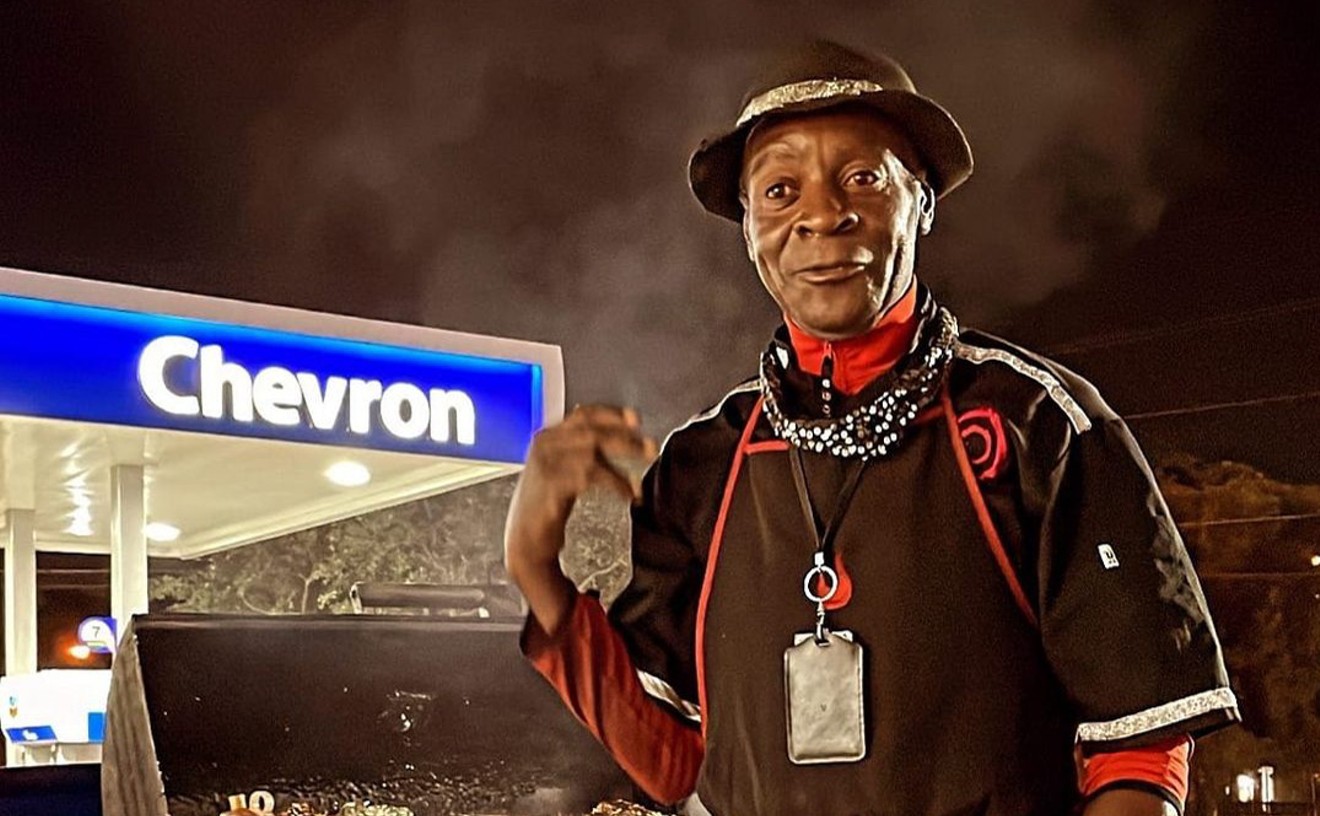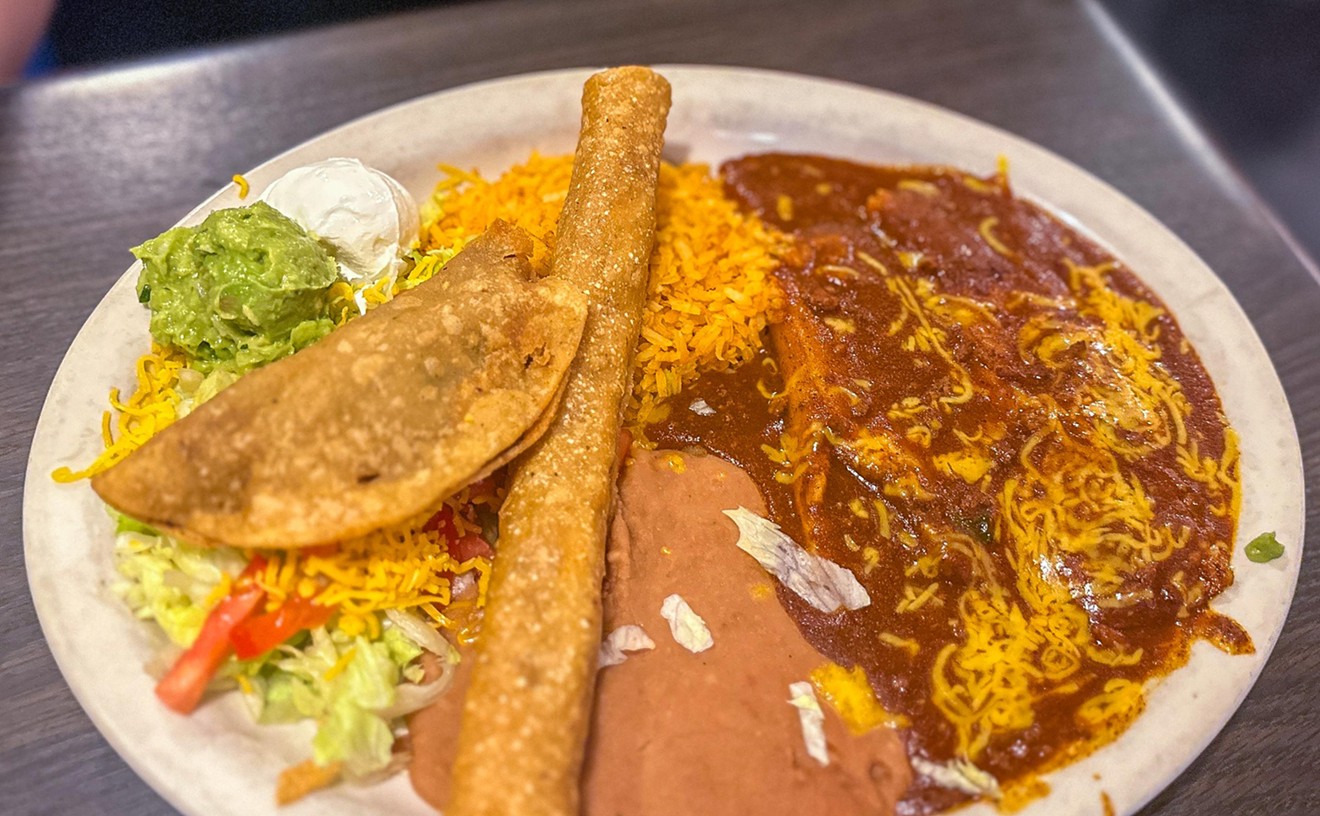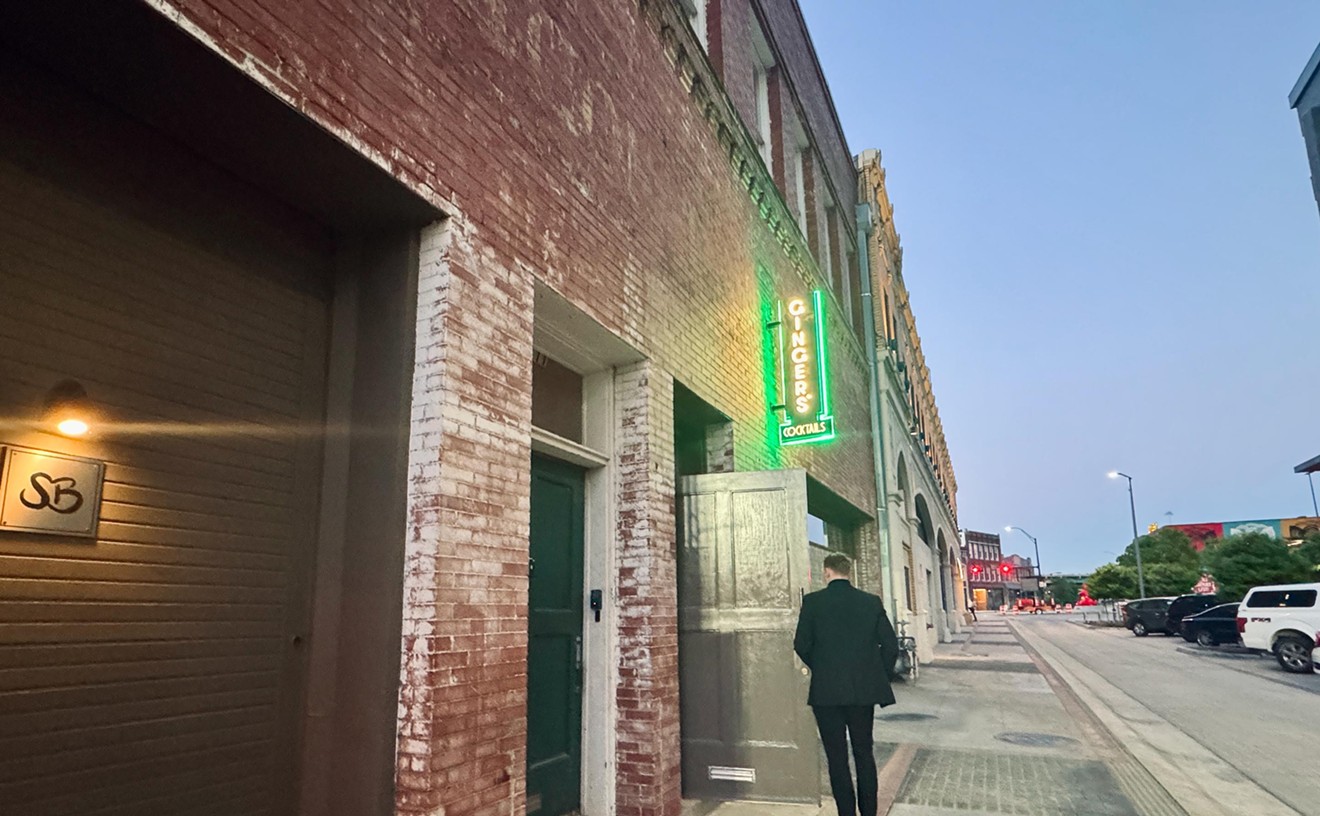Our movie follows a bunch of tough hombres--John Wayne, Gary Cooper, Randolph Scott--fending off Mothra and the occasional kamikaze, massaging the herd after a few beers and gathering around the campfire to sing karaoke while "Cookie" whittles up a sushi tray. Instead of chasing down an errant cow, Cooper would save face by committing ritual suicide.
Beats the hell out of Yul Brenner and The Magnificent Seven.
The Western as a film genre, the cowboy, the cattle drive: These are American creations. The steak house, too: clubby rooms, big hunks of meat, martinis and (on the patio) cigars. Yet much of our understanding of the American West and of American cuisine is based on myth. Cattle drives were inefficient. Just as soon as corporate ranches could fence in their property and establish rail lines, the cowboy era fizzled. Over the past 20 years, some 500,000 independent ranchers sold their cattle, returned their Wranglers to Kmart and quit the cowboy life.
We point this out because the hottest item at steak houses, burger joints and hot dog stands is Kobe beef, a Japanese creation. Kobe is delicate and deeply marbled. It grades better than prime. Critics describe it as beef foie gras, the product of careful tending, daily massages and a diet of sake--at least according to tradition. Such stalwart establishments as Pappas Bros. Steakhouse, Chamberlain's, Abacus and Al Biernat's serve Kobe beef. Tei Tei Robata Bar carves up Kobe in the traditional Japanese fashion. Who's Who and Nana offer Kobe burgers. The Dralion grills up the steaks and soon will add burgers to the menu. Various establishments have experimented with different cuts, including prime rib. And Kobe hot dogs will soon hit the market.
"We've done everything except Kobe fajitas," says Judd Fruia, manager at Pappas Bros.
The only place, it seems, that does not serve the super-prime beef is Kobe Steaks, although the restaurant uses up quite a bit of space on its menu and Web site describing the provenance, diet and kinky massage techniques favored by the lucky critters.
Like most traditional items, the myth of Kobe beef is more popular than real. True Kobe comes from the wagyu breed--literally "Japanese cow"--fed and slaughtered in the prefecture of Kobe, Japan. Most of the stuff on the market today, though, is produced in Idaho, Washington, California and Australia. "We sell a lot of our beef to Japan," says Mark Hoegh, director of marketing for YamaBeef in Mabank, Texas.
"You can't really tell the difference, and obviously you don't have the travel costs," Fruia says of the local version.
Ah, yes. Cost. The stuff is expensive. When a salesperson foolishly offered to treat the Burning Question crew to dinner one evening, we ordered Kobe at Al Biernat's and then bailed--excused ourselves, rather--before she glanced at the bill. Pappas Bros. sells it for a whopping $15 an ounce, with a 6-ounce minimum. Al Biernat's asks $54 for a small (by Texas standards) fillet, a Kobe-Angus blend from a Texas herd.
Yes, most of the Kobe-style beef sold in Dallas restaurants originates in Texas. And very little of it comes from pure stock.
"The majority of the stuff in Dallas is a Kobe-Angus cross," points out Travis Henderson, chef at Perry's, "and most people don't know that." Indeed, very few establishments serve true Kobe beef, even in Japan.
"Most of what is sold is a cross," Hoegh acknowledges. Yet he considers that a good thing. The commingling of Angus and wagyu creates a larger animal, yielding more consistent meat. "It's hard to explain, but it's just as good," Hoegh says. "I think most of our customers think it's full blood."
They use pure wagyu breeding stock, he says, which lends flavor and marbling to the meat. "The Angus is just along for the ride."
We're almost certain Bobby Knight caught heat for saying something like that once.
OK, so it's not from Japan, it's not pure wagyu and there's no Japanese version of Jimmy Stewart riding herd over the desolate plains of Kanto. At least they still massage the cows, don't they? And feed them beer?
"Even in Japan, the only ones getting a massage are those meant for carcass competitions," Hoegh says.
Instead, American ranchers confine wagyu cattle to the smallest pens allowed by federal standards. As compensation for their narrow space, wagyu and crossbred cattle feed on the mash leftover from beer production. "The alcohol has broken down the grain, so the cow doesn't have to work as hard to digest the grain," says Brad Garsee, chef at The Dralion, explaining the benefits of such a diet. In addition, Hoegh points out, the cattle "get addicted" to the feed. Leftover alcohol in the beer byproduct attracts them and keeps them on a regular feeding schedule, and a steady diet lends consistency to the end product.
It can't hurt the breeding process, either.
So, what's up with Kobe beef? (That is this week's Burning Question, after all.) Let's see...drunken cattle and indiscriminate sex create a damn good piece of meat.
It's a wonder Budweiser doesn't build an ad campaign around it.










